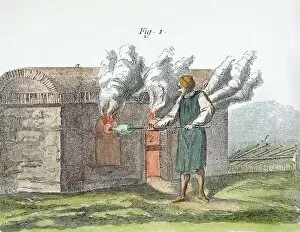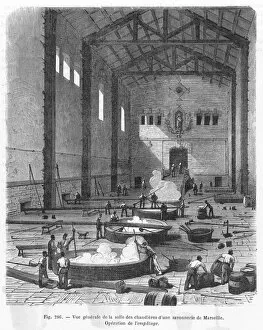Making Collection (page 100)
From Betsy Ross stitching the first American flag to Coopers crafting wooden barrels, the art has shaped our history
All Professionally Made to Order for Quick Shipping
From Betsy Ross stitching the first American flag to Coopers crafting wooden barrels, the art has shaped our history. As depicted in Henry Mosler's painting, we witness the dedication and skill required to create something meaningful. Just like the intricate Bayeux Tapestry that tells the story of the Battle of Hastings, every stitch and thread holds significance. Even honey bees diligently constructing their honeycomb remind us that nature itself is a master maker. In times of war, making took on new forms as seen through Women's Institute activities during World War I. Their resourcefulness and creativity helped sustain communities amidst chaos. However, not all creations were noble; German propaganda posters during WWI aimed to manipulate minds with their crafty designs. Artistic endeavors also found their place in literature, such as Mr. Bingley's anticipation for an artwork in Pride & Prejudice or Muriel Dawson's charming illustration titled 'Little Miss Natty Fingers. ' These pieces demonstrate how making transcends mediums and captures emotions. Even sports have witnessed moments where making takes center stage – Compton and Edrich leaving the Oval pitch after a game in 1953 symbolizes both triumphs achieved through teamwork and individual craftsmanship. Lastly, let us not forget about timekeeping instruments like Tompion's Lantern Clock – a testament to precision engineering throughout history. Whether it be sewing flags or creating cider presses, these snapshots from different eras highlight humanity's innate desire to make something lasting. The act of creation connects us across time and cultures; it is an expression of our ingenuity and passion.
















































